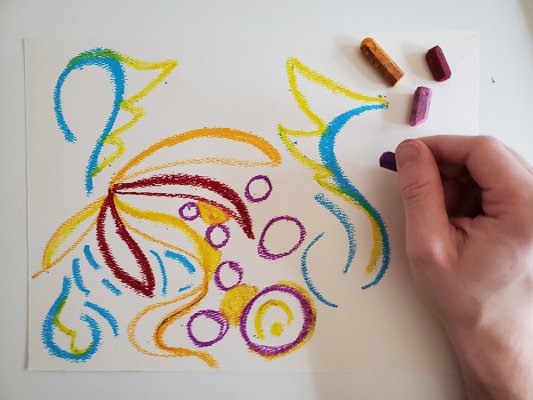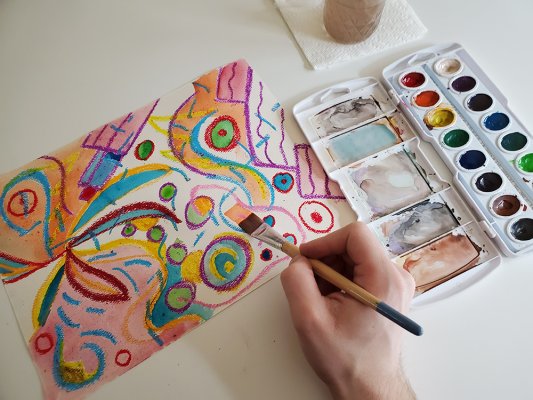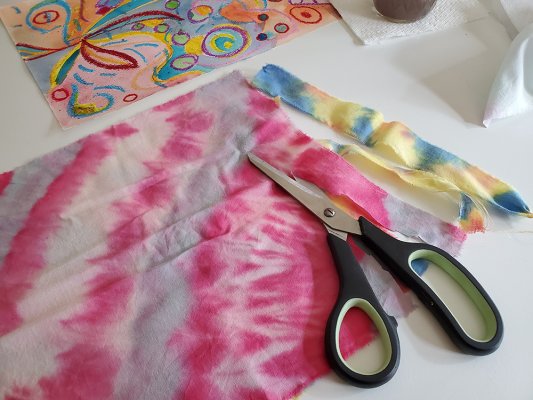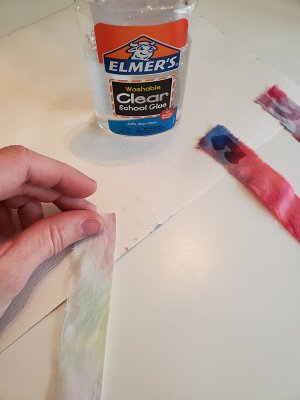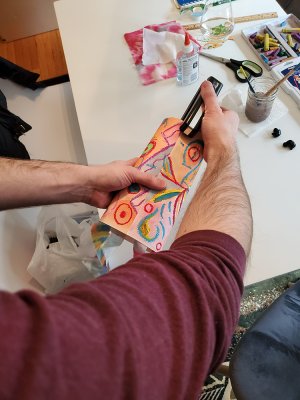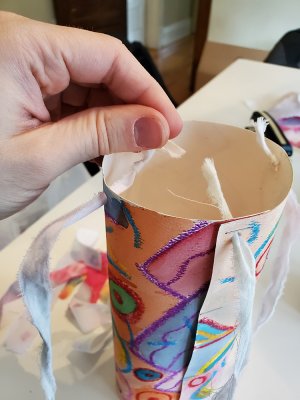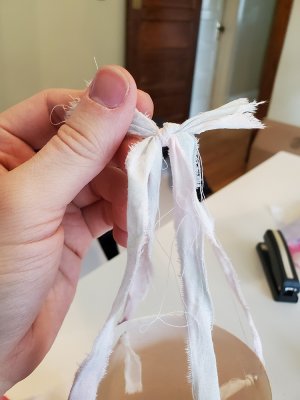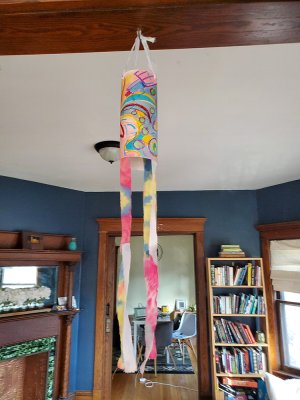Getting Started
- What was the first thing you noticed in the painting?
- How many colors, shapes, and patterns do you see?
- Do you feel any kind of emotion looking at this piece?
- How would you want someone to feel looking at your finished work?
Materials
- Paper
- Oil pastels or crayons
- Ribbon, fabric, or paper strips
- Elmer’s glue
- Watercolor paint
- Paintbrush
- Water
- Needle and thread
- Stapler
- Scissors


